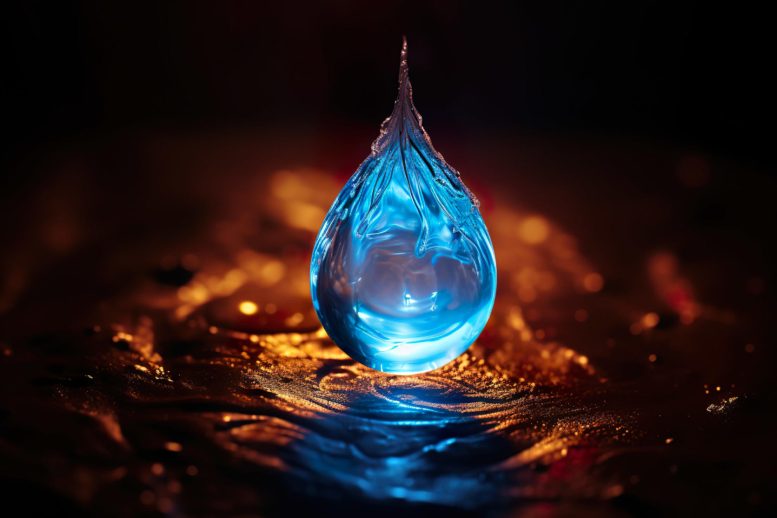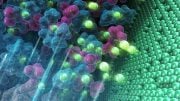
Using advanced equipment, researchers studied sea salt to uncover changes in seawater chemistry and its relation to geological processes and climate over the last 150 million years. Their findings linked tectonic plate movements to shifts in ocean and atmospheric compositions, influencing global climate and marine biology.
A new study connects seawater chemical shifts to volcanic activity and climate.
Sea salt hides a secret: tiny droplets of the seawater from which it came, preserving geologic history.
Utilizing advanced equipment funded by the National Science Foundation grant, Dr. Mebrahtu Weldeghebriel, Ph.D. ’22, a postdoctoral researcher at Princeton University, collaborated with Binghamton University’s Distinguished Professor of Earth Sciences, Tim Lowenstein. Together, they reconstructed shifts in seawater chemistry spanning the last 150 million years, shedding light on corresponding geological events and climatic transformations.
Their paper was recently published in the journal Science Advances.
The ocean “is like a giant soup of different elements,” Lowenstein explained. “Sodium and chloride are the most common ones, but there are dozens of others dissolved in seawater in trace amounts such as lithium.”
They looked at sea salt (halite) formed at various times over the past 150 million years in geographically diverse sedimentary basins in the United States, Europe, Asia, and Africa. Within the salt samples were tiny pockets containing a bit of ancient seawater.

Mebrahtu Weldeghebriel was the lead author of the paper recently published in the journal Science Advances. Credit: Binghamton University, State University of New York
To access the tiny droplets, the researchers used a laser to drill holes into the salt crystals and then a mass spectrometer to analyze the different trace elements present. In this research, they focused specifically on the concentration of lithium, a trace element that sustained a seven-fold decrease over the past 150 million years, paralleled by a rise in magnesium-to-calcium ratios.
But why?
The cause for the long-term variations in seawater composition has been debated for the past two decades. The researchers proposed that the decline in lithium concentration in seawater is mainly associated with reduced production of oceanic crust and decreased seafloor hydrothermal activity, both of which are influenced by the movements of tectonic plates. The slowdown in plate activity over the past 150 million years led to less lithium being added to the ocean and reduced amounts of carbon dioxide released into the atmosphere, which ultimately led to global cooling and the present ice age. Turning back the clock 150 million years, the earth was a warmer place with more carbon dioxide in the atmosphere and more lithium in the sea.
“There is a close link between ocean chemistry and atmospheric chemistry,” Weldeghebriel said. “Whatever changes happen in the ocean also reflect what’s happening in the atmosphere.”
Overall, Weldeghebriel and Lowenstein’s research has made a significant advance in understanding the chemistry of Earth’s ancient oceans and how the movement of tectonic plates has influenced the composition of our Earth’s hydrosphere and atmosphere. Such chemical changes impact biology, as well, such as the marine creatures that build their shells out of calcium carbonate.
“The oceans and atmosphere are connected to one another, and how they change is related,” Lowenstein explained. “Everything is connected.”
Reference: “Seafloor hydrothermal systems control long-term changes in seawater [Li+]: Evidence from fluid inclusions” by Mebrahtu F. Weldeghebriel and Tim K. Lowenstein, 26 July 2023, Science Advances.
DOI: 10.1126/sciadv.adf1605









Excellent progress identifying the integrated elements of all environments and critically identifying the subtle changes & their causes is a big step in identifying and tackling our future climate!!
The change in the concentration of the Lithium could be related to the growth and expansion of planets. in this case, in the last 200 million years the surface area of the Ocean basins went from zero percent to 71 % of the Earth’s surface, while the surface area of the Continents went from 100 % down to 29 % of the enlarging total planet surface area. In coordination, around 82 million years ago the water level reached a maximum depth over the continents, and by 70 million years ago, all the water had poured off the continents into the more rapidly enlarging Ocean Basins. In addition, the total volume of the water that has come up out of the fractures in the Earth was also increasing. The combination of all these processes dilutes the amount of Lithium in sea water today when compared to the amount around 150 million years ago when there was little Ocean Basins surface area, and lots of continental surface area.
Earth volume is known to be constant, the same mass and density (due to gravity).